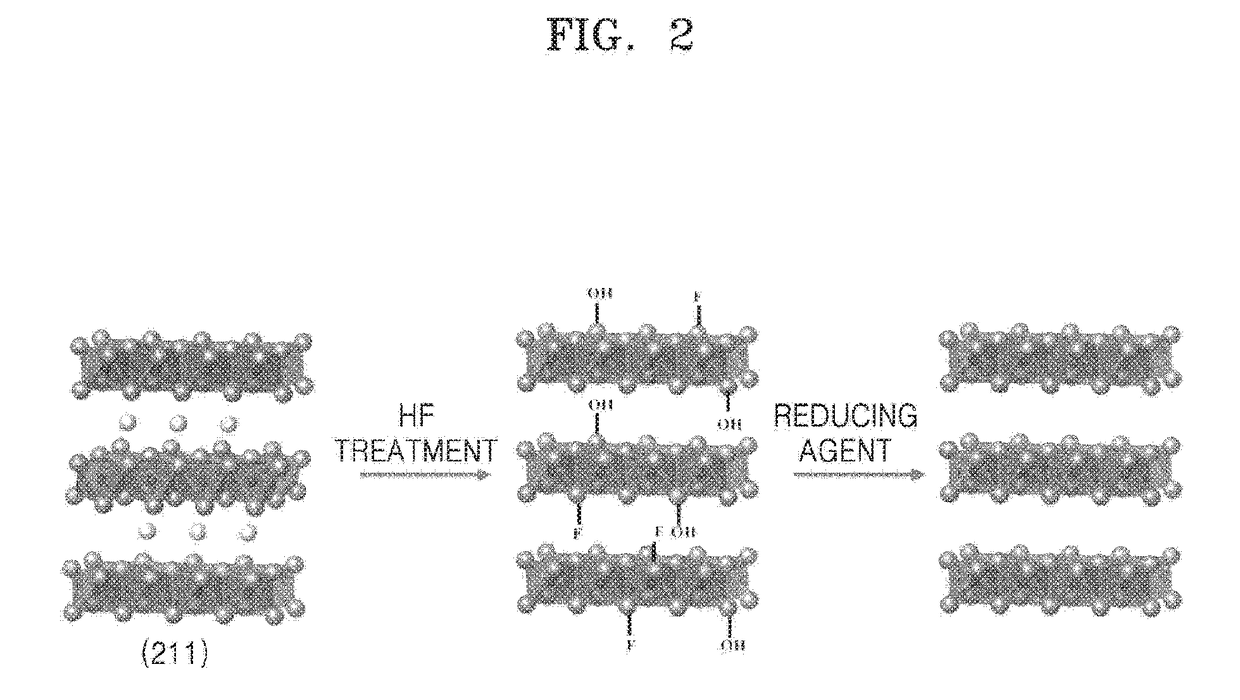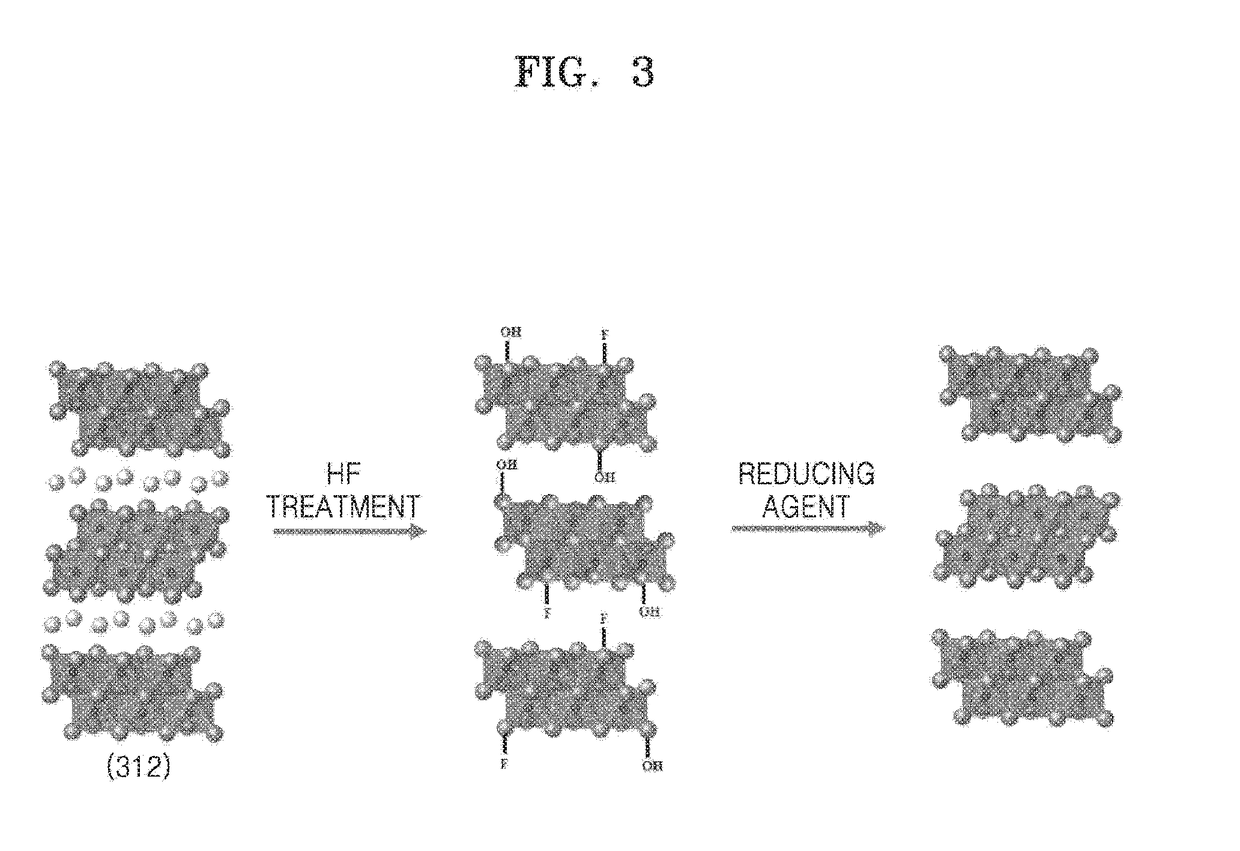Mxene nanosheet and manufacturing method thereof
a technology of mxene nanosheets and manufacturing methods, applied in the direction of material nanotechnology, transportation and packaging, carbides, etc., can solve the problems of deterioration of the intrinsic properties of mxene, difficulty in modifying the two-dimensional structure using a general mechanical or chemical exfoliation method,
- Summary
- Abstract
- Description
- Claims
- Application Information
AI Technical Summary
Benefits of technology
Problems solved by technology
Method used
Image
Examples
preparation example 1
Synthesis of Ti3AlC2
[0088]Ti2AlC (MAXTHAL®-211, purchased from Kanthal) and TiC (purchased from Alfa asear) are mixed at a molar ratio of 1:1, followed by ball milling for 24 hours. The milled mixture of Ti2AlC and TiC was sintered by spark plasma sintering (SPS) at 1250° C. for 10 minutes to synthesize Ti3AlC2. Ti3AlC2 thus synthesized is subjected to sonication in methanol to prepare powder.
example 1
Preparation of Ti2C from Ti2AlC
[0089]1 g of Ti2AlC (MAXTHAL®-211, purchased from Kanthal) is mixed with 10 mL of 10% HF, and stirred at room temperature for 10 hours. The resulting product (Ti2CTs) from stirring is filtered with 1 L of water, and centrifugation is performed in order to remove impurities. Substances floating on water are collected and dried in a vacuum oven for 24 hours.
[0090]100 mg of the resulting product (Ti2CTs) is put in a flask and water is removed. 70 mg of Li metal is added thereto. 10 mL of ethylene diamine (EDA) is added under a nitrogen atmosphere, and a reaction is allowed at 25° C., 50° C. and 80° C. from room temperature to 80° C., respectively. Each of the reaction products thus obtained is neutralized with 500 mL of 5 wt % HCl, and filtered while successively washing with 1 L of water, 500 mL of ethanol, and 300 mL of acetone. After washing, the powder is dried in a vacuum oven at 120° C. for 2 days to obtain Ti2C.
example 2
Preparation of Ti3C2 from Ti3AlC2
[0091]Ti3C2 is obtained in the same manner as in Example 1, except that Ti3AlC2 synthesized in Preparation Example 1 is used as a starting material instead of Ti2AlC, 1 g of Ti3AlC2 is mixed with 10 mL of 50% HF, and this mixture is stirred at room temperature for 2 hours.
PUM
| Property | Measurement | Unit |
|---|---|---|
| temperature | aaaaa | aaaaa |
| temperature | aaaaa | aaaaa |
| temperature | aaaaa | aaaaa |
Abstract
Description
Claims
Application Information
 Login to View More
Login to View More - R&D
- Intellectual Property
- Life Sciences
- Materials
- Tech Scout
- Unparalleled Data Quality
- Higher Quality Content
- 60% Fewer Hallucinations
Browse by: Latest US Patents, China's latest patents, Technical Efficacy Thesaurus, Application Domain, Technology Topic, Popular Technical Reports.
© 2025 PatSnap. All rights reserved.Legal|Privacy policy|Modern Slavery Act Transparency Statement|Sitemap|About US| Contact US: help@patsnap.com



